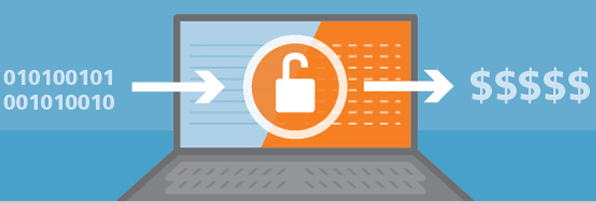
The individual choice principle acknowledges that individuals have distinct preferences regarding the sharing of their health information and aims to accommodate these preferences within the framework of electronic health information exchange.
What is the Privacy and Security Framework?
The Nationwide Privacy and Security Framework for Electronic Exchange of Individually Identifiable Health Information is often referred to more succinctly as the Privacy and Security Framework. It refers to a set of principles and guidelines developed by the Office of the National Coordinator for Health Information Technology (ONC) to ensure the protection of health information when it is exchanged electronically.
The framework was developed to ensure that individuals' health information is secure, private, and properly protected while allowing the flow of health information needed to provide and promote high-quality health care. It is intended to be a foundation for protecting health information when electronically exchanged across different entities, systems, and jurisdictions.
The framework typically includes principles related to:
- Openness and transparency
- Purpose specification and minimization
- Collection, use, and disclosure limitations
- Data quality and integrity
- Individual rights and participation
- Security safeguards and controls
- Accountability and oversight
See also: HIPAA Compliant Email: The Definitive Guide
The Privacy and Security Framework and HIPAA
While The Privacy and Security Framework and HIPAA's Privacy Rule are not the same document, they have some similarities.
- HIPAA's Privacy Rule: Primarily focuses on the use and disclosure of Protected Health Information (PHI) by covered entities and their business associates. It gives patients rights over their health information, including rights to examine and obtain a copy of their health records and request corrections.
- Privacy and Security Framework: Provides a broader set of principles that address the electronic exchange of health information across different entities, systems, and jurisdictions. It's more about guiding the development of technologies and practices for health information exchange.
While the Privacy and Security Framework provides a set of guiding principles, the HIPAA Privacy Rule provides the legal requirements that covered entities and their business associates must follow. The framework can be seen as a complementary guide that helps entities understand and navigate the electronic exchange of health information in a manner that aligns with HIPAA's requirements and other regulations.
See also: What are HIPAA's Privacy Rule provisions?
Understanding the individual choice principle
The Individual Choice Principle is part of the Privacy and Security Framework. It emphasizes the necessity of giving individuals the opportunity and capability to make informed decisions relating to the collection, use, and disclosure of their individually identifiable health information.
The principle recognizes that enabling individuals to make choices about the electronic dissemination of their identifiable health data is pivotal for establishing trust. Moreover, it acknowledges that the manner and extent of these choices can differ based on the nature of the information shared, the purpose of the exchange, and the intended recipient of the information.
Individual choice principles
The HIPAA Privacy Rule operationalizes the individual choice principle by providing patients with rights and mechanisms to their personal health information, such as:
- Access: Individuals have the right to access their health information held by covered entities.
- Amendment: Individuals can request amendments to their health information if they believe it is inaccurate or incomplete.
- Accounting of Disclosures: Individuals have the right to receive an accounting of certain disclosures of their health information.
- Notice of privacy practices: Covered entities are required to provide individuals with a notice outlining their privacy practices.
- Consent and authorization: Individuals can provide consent or authorization for specific uses and disclosures of their health information.
- Request restrictions: Individuals can request restrictions on the uses and disclosures of their health information. However, covered entities are not always required to agree to these requests.
This allows them to have a say in how their health information is handled and shared within electronic health information exchange environments.
The Individual choice principles extend these rights through the promotion of
- Informed decision-making: The individual choice principle emphasizes that individuals should be able to make informed decisions about how their individually identifiable health information is collected, used, and disclosed.
- Trust building: Allowing individuals to make choices regarding the electronic exchange of their health information is necessary for building trust in information-sharing systems.
- Variability of choices: The principle acknowledges that the choices individuals make and the level of detail for which choices are available may vary based on factors such as the type of information exchanged, the purpose of the exchange, and the intended recipient.
- Tailored policies: Covered entities can adopt policies that extend beyond the baseline requirements of the Privacy Rule, allowing them to customize consent and restriction mechanisms according to their professional ethics and judgment.
- Individual empowerment: By enabling individuals to access, consent to, or request restrictions on their health information, the individual choice principle empowers individuals to actively participate in managing their health data.
See also: What is the HIPAA right to amend?
Patient's Right to Request Restrictions
The "Right to Request Restrictions" is a fundamental aspect of the individual choice principle within the context of the HIPAA Privacy Rule. This right empowers individuals to exert control over the sharing of their individually identifiable health information, in line with the principle's emphasis on informed decision-making and active participation.
Under this provision, individuals can request limitations on how their health information is used or disclosed for treatment, payment, or healthcare operations purposes. While covered entities are not mandated to agree to these restrictions, they are required to have established policies and procedures for considering and responding to such requests.
The "Right to Request Restrictions" gives individuals the opportunity to align the management of their health information with their preferences and needs. For example, individuals might choose to restrict certain disclosures of sensitive information to specific parties or for particular purposes, providing a sense of privacy and control.
Subscribe to Paubox Weekly
Every Friday we'll bring you the most important news from Paubox. Our aim is to make you smarter, faster.




